

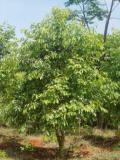
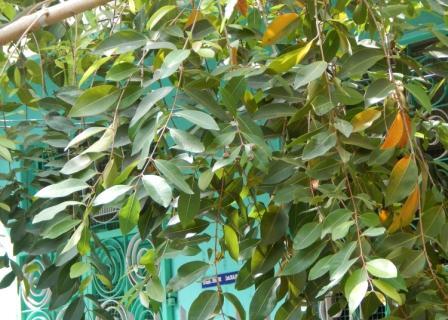
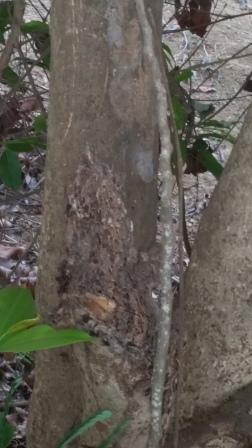
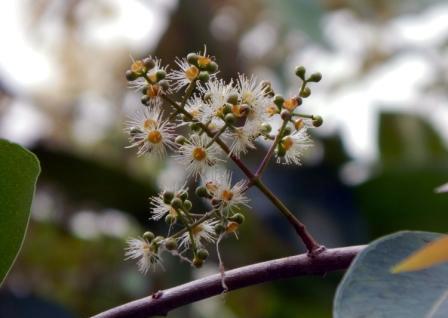
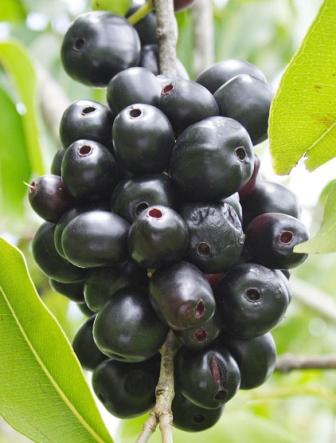
• Jaman is a large evergreen tree with a dense, shady, much branched crown of shrinking dark foliage.• Flowers greenish white, sweet scented. • Fruits are variable in size first pink and turns black with pink juicy drupe• Seeds irregular shaped white in color.
• Jaman regenerates adequately from seeds, in its natural habitat.• Each fruit may produce 1-5 seedlings clustered together.
• Ripened fruits are collected from tree or ground from June-August. • The fruits are depulped and dried before sowing.• Viability of the seeds are very low.• The number of seeds per kg vary from 1100-1800. • The germination percentage from 20-90 and • Plant percent varies from 56-96%.
• Hot water treatment for 10 mins to remove the seed coat
• The seed are drilled 15 cm apart and seeds spaced about 5 cm in drills in mother bed during July-June. • Depth of sowing is usually 2.0-2.5 cm. • Germination starts within two weeks. • Two -five seedlings may emerge from a single fruit. • A good two leaf seedlings are pricked out from the nursery bed and transplanted into polybags.• One year nursery raised seedlings are fit for planting.
1. Direct sowing: • This is easiest, cheapest and commonly adopted method for raising jaman.• Sowing is done in lines and kept regularly weeded.• Soil should be kept moist by providing shade if irrigation is not possible2. Nursery raised seedlings:• One month old seedlings are best for planting out. • Planting should be carried out after the commencement of monsoon • Planting out is carried out during July in 30 cm3 pits, • Spacing of 5 x 5 m is adoptable in block planting.• Spaced between 12 and 14 m if plants as ornamentals and 6 m apart if for a wind break.3. Stump Planting: • Stumps prepared from seedlings about 90 cm long and 1.5- 3 years old.• It gives 90%survival rate. • Stumps with .8-2.0 cm collar diameter. • Stump planting gives poor results in the yield.
Weeding and soil working is carried out as and when required.
Young trees require 8 to 10 irrigations in a year The mature trees require only about half the number, which should be applied during May and June when the fruit is ripening
• It is a shade tree.• Yields jamun fruit.• Bark is used in tanning.• Leaves are used as fodder.• Wood is heavy moderately durable used for building constructions, post, beams, door frames, panels, constructions of boats and agricultural implements.
Agroforestry Uses:The plant is amenable to trimming and can be grown as a hedge or to provide shelter from the wind.In perennial plant systems it is often interplanted as a shade-provider with crops such as bananas, coffee and cocoal.The flowers are very attractive to bees, yielding a quality honey.